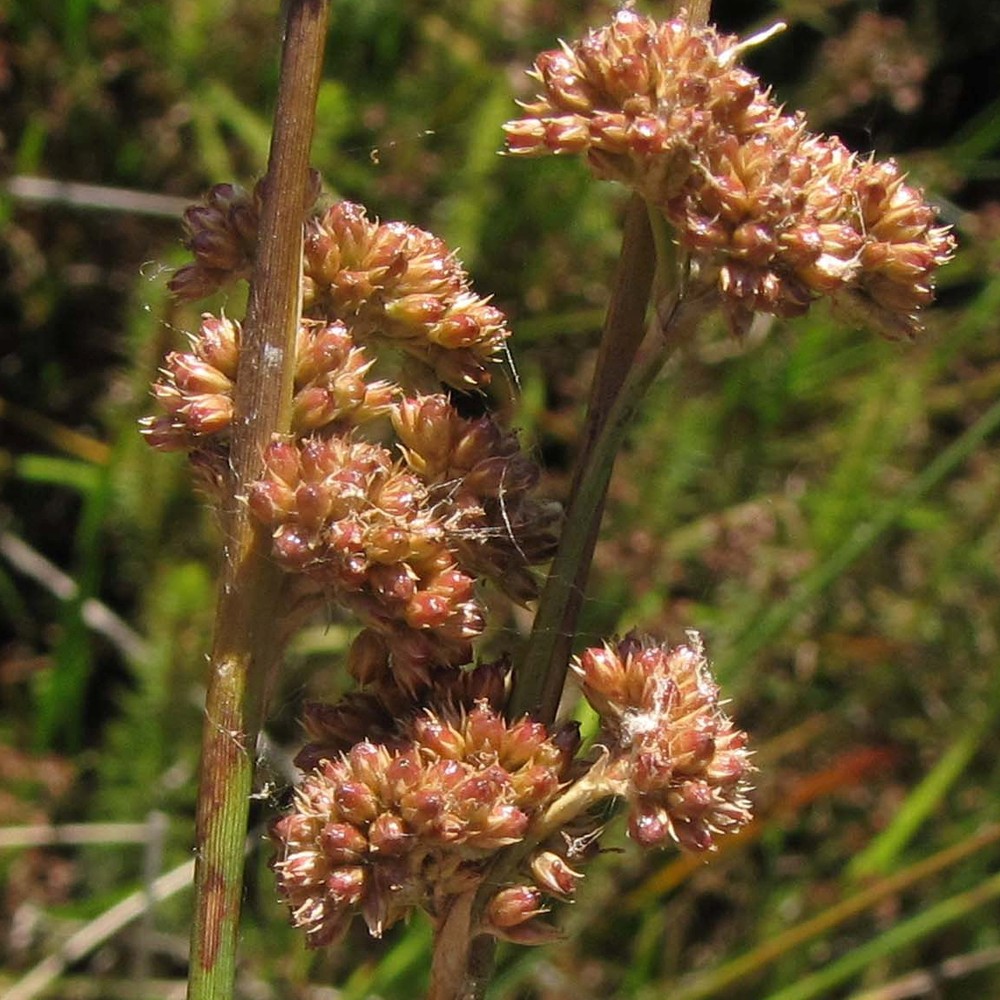Great soft-rush
(Juncus inflexus inflexus)

Description
Juncus pallidus, commonly known as the great soft-rush pale rush, giant rush, or leafless rush is a species of rush that is native to southern Australia, New Zealand, Norfolk Island, and Lord Howe Island. It is a vigorous, tufted, tussock-forming, rhizomatous perennial herb with culms growing to 70–135 cm in height. The inflorescence, which is 25–185 mm long, contains many straw coloured flowers, each with six floral segments. It is usually found in moist, nutrient-poor soils subject to periodic flooding, such as fresh and brackish waterways, including swamps, creek banks, lake edges and sand seeps. Juncus is a genus of monocotyledonous flowering plants, commonly known as rushes. It is the largest genus in the family Juncaceae, containing around 300 species. Rushes of the genus Juncus are herbaceous plants that superficially resemble grasses or sedges. They have historically received little attention from botanists; in his 1819 monograph, James Ebenezer Bicheno described the genus as "obscure and uninviting". The form of the flower differentiates rushes from grasses or sedges. The flowers of Juncus comprise five whorls of floral parts: three sepals, three petals (or, taken together, six tepals), two to six stamens (in two whorls) and a stigma with three lobes. The stems are round in cross-section, unlike those of sedges, which are typically somewhat triangular in cross-section. In Juncus section Juncotypus (formerly called Juncus subg. Genuini), which contains some of the most widespread and familiar species, the leaves are reduced to sheaths around the base of the stem and the bract subtending the inflorescence closely resembles a continuation of the stem, giving the appearance that the inflorescence is lateral. Juncus has a cosmopolitan distribution, with species found throughout the world, with the exception of Antarctica. They typically grow in cold or wet habitats, and in the tropics, are most common in montane environments. Several fossil fruits of a Juncus species have been described from middle Miocene strata of the Fasterholt area near Silkeborg in Central Jutland, Denmark.
Taxonomic tree:







